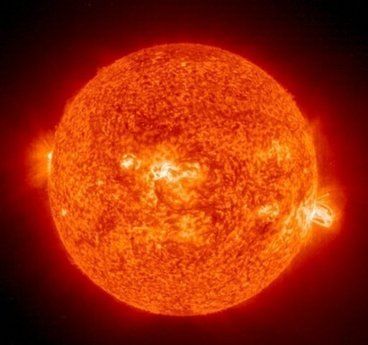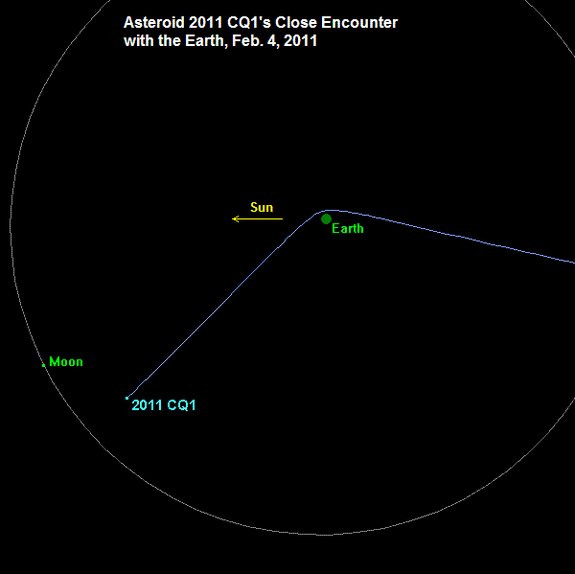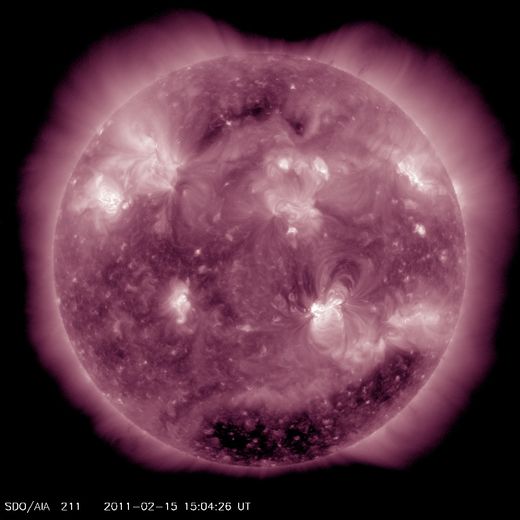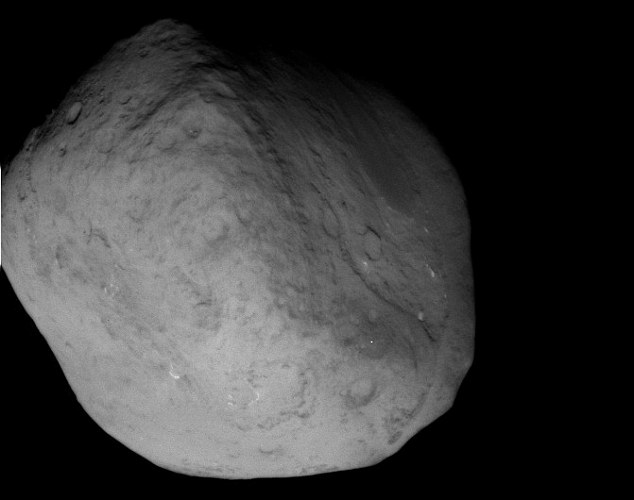
© unknown
A wave of charged plasma particles from a huge solar eruption has glanced off the Earth's northern pole, lighting up auroras and disrupting some radio communications, a NASA scientist said.
But the Earth appears to have escaped a widespread geomagnetic storm, with the effects confined to the northern latitudes, possibly reaching down into Norway and Canada.
"There can be sporadic outages based on particular small-scale events," said Dean Persnell, project scientist at NASA's Solar Dynamics Observatory at Goddard Space Flight Center.
He told AFP the official forecast is "for generally quiet conditions today, perhaps some minor storming tomorrow, but nothing extraordinary."
The event began Tuesday at 0156 GMT with a spectacular solar eruption in a sunspot the size of Jupiter that produced a Class X flash -- the most powerful of all solar events.
The eruption blasted a torrent of charged plasma particles called a coronal mass ejection (CME) toward Earth at about 560 miles per second (900 kilometers per second), the Solar Dynamics Observatory reported.
A direct hit from a CME could trigger a huge geomagnetic storm as incoming particles bounce off the Earth's geomagnetic field, blacking out radio communications, interfering with GPS navigational systems, in theory even causing power outages.




Comment: Did you notice the politician's surprise that an asteroid "actually travelled between the moon and the Earth" early in the last decade?
That has happened multiple times since then. Just three weeks ago a rock came as close to Earth as it could have done being pulled into our atmosphere; the planet's gravity instead changed the rock's direction by nearly 90 degrees.
It is highly unlikely that world leaders at the highest level are not aware of the threat of a meteorite impact. We have been suggesting that they ARE aware, and have been for a very long time. The reader might wish to peruse Laura Knight-Jadczyk's Comets and Catastrophe series. They are also aware that they cannot do anything to prevent impacts such as those described in the above article. And so, they marginalize the subject and feign disinterest all the while they are making their own preparations to survive.
There is much evidence to strongly suggest that much of the landmass of Western Europe was destroyed in an meteorite impact around 540 AD, ushering in what is known today as "the dark ages". Further evidence from the study of fossilised tree rings and ice core samples, not to mention historical records, suggests that this most recent event was but one of many events that have happened in a cyclical pattern throughout the course of human history.
As far as we know, no human has ever got out of this place "alive". Perhaps now that the Universe, by posing a clear and present danger to our very existence, is drawing attention to that existence, we might all begin, even at this late hour, to ponder just what the real meaning of our lives, individually and collectively, really is.